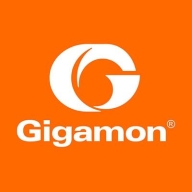

Splunk Enterprise Security and Gigamon Deep Observability Pipeline compete in the IT visibility and security domain. Splunk appears to have the upper hand due to its extensive data analysis, visualization features, and machine learning capabilities, as inferred from the comparison.
Features: Splunk Enterprise Security excels in handling structured and unstructured data with rapid searching and real-time monitoring capabilities. It integrates with various data sources and offers robust machine learning capabilities. Its scalability and powerful log management make it a flexible solution. Gigamon focuses on network visibility with its packet filtering and aggregation features, optimizing performance but with fewer data analysis capabilities compared to Splunk.
Room for Improvement: Splunk Enterprise Security could improve user access control, security layers, and documentation. The complex architecture and high ingestion costs are challenges, necessitating better predictive analytics and AI integration. Gigamon needs to enhance its cloud network monitoring and develop multi-cloud capabilities. Both products have room for better integration and user experience improvements.
Ease of Deployment and Customer Service: Splunk Enterprise Security supports hybrid and multi-cloud deployments with generally positive customer service feedback, though its initial setup can be complex and support responsiveness varies. Gigamon is simpler to deploy in on-premises environments but limited in cloud capabilities, appreciated for integration benefits but needing better cloud monitoring support.
Pricing and ROI: Splunk Enterprise Security is known for its high cost based on data ingestion volume, yet offers significant value with comprehensive security features, often resulting in a strong ROI through improved security postures. Gigamon's pricing is reasonable compared to Splunk, focusing on network optimization with a high ROI in performance-critical environments but limited in data analysis scope.
The documentation for Splunk Enterprise Security is outstanding. It is well-organized and easy to access.
I have noticed a return on investment with Splunk Enterprise Security, as it delivers substantial value for money.
Customers see the value in investing in this solution, particularly when it helps resolve issues quickly, turning a potential 20-hour response into one hour.
The technical support by Gigamon Deep Observability Pipeline is good because it has a local architect in my area.
We have paid for Splunk support, and we’re not on the free tier hoping for assistance; we are a significant customer and invest a lot in this service.
If you want to write your own correlation rules, it is very difficult to do, and you need Splunk's support to write new correlation rules for the SIEM tool.
They try to close issues as soon as possible, often just offering documentation links.
They struggle a bit with pure virtual environments, but in terms of how much they can handle, it is pretty good.
It is easy to scale.
It's big in a Central European context, and small from a Splunk North American context.
They test it very thoroughly before release, and our customers have Splunk running for months without issues.
It provides a stable environment but needs to integrate with ITSM platforms to achieve better visibility.
I would rate it a ten out of ten for stability.
Improving the infrastructure behind Splunk Enterprise Security is vital—enhanced cores, CPUs, and memory should be prioritized to support better processing power.
Splunk Enterprise Security is not something that automatically picks things; you have to set up use cases, update data models, and link the right use cases to the right data models for those detections to happen.
For any future enhancements or features, such as MLTK and SOAR platform integration, we need more visibility, training, and certification for the skilled professionals who are working.
I saw clients spend two million dollars a year just feeding data into the Splunk solution.
The platform requires significant financial investment and resources, making it expensive despite its comprehensive features.
I find it to be affordable, which is why every industry uses it.
The Pipeline's Comprehensive Insights into data flows have helped improve operational efficiency and security.
This capability is useful for performance monitoring and issue identification.
I assess Splunk Enterprise Security's insider threat detection capabilities for helping to find unknown threats and anomalous user behavior as great.
Splunk Enterprise Security provides the foundation for unified threat detection, investigation, and response, enabling fast identification of critical issues.


Gigamon Deep Observability Pipeline is a comprehensive network visibility solution that provides real-time insights into network traffic. It offers SSL inspection and mobile network monitoring for traffic monitoring purposes. The solution optimizes networks, aids in security inspection, and improves firewall performance. It is praised for its performance, power, straightforward integration, stability, and ease of initial setup.
With Gigamon, organizations can gain complete visibility into their network traffic, identify potential threats, and take proactive measures to prevent them. The solution is ideal for organizations of all sizes, including enterprises, service providers, and government agencies.
Splunk Enterprise Security is widely used for security operations, including threat detection, incident response, and log monitoring. It centralizes log management, offers security analytics, and ensures compliance, enhancing the overall security posture of organizations.
Companies leverage Splunk Enterprise Security to monitor endpoints, networks, and users, detecting anomalies, brute force attacks, and unauthorized access. They use it for fraud detection, machine learning, and real-time alerts within their SOCs. The platform enhances visibility and correlates data from multiple sources to identify security threats efficiently. Key features include comprehensive dashboards, excellent reporting capabilities, robust log aggregation, and flexible data ingestion. Users appreciate its SIEM capabilities, threat intelligence, risk-based alerting, and correlation searches. Highly scalable and stable, it suits multi-cloud environments, reducing alert volumes and speeding up investigations.
What are the key features?Splunk Enterprise Security is implemented across industries like finance, healthcare, and retail. Financial institutions use it for fraud detection and compliance, while healthcare organizations leverage its capabilities to safeguard patient data. Retailers deploy it to protect customer information and ensure secure transactions.
We monitor all Security Information and Event Management (SIEM) reviews to prevent fraudulent reviews and keep review quality high. We do not post reviews by company employees or direct competitors. We validate each review for authenticity via cross-reference with LinkedIn, and personal follow-up with the reviewer when necessary.